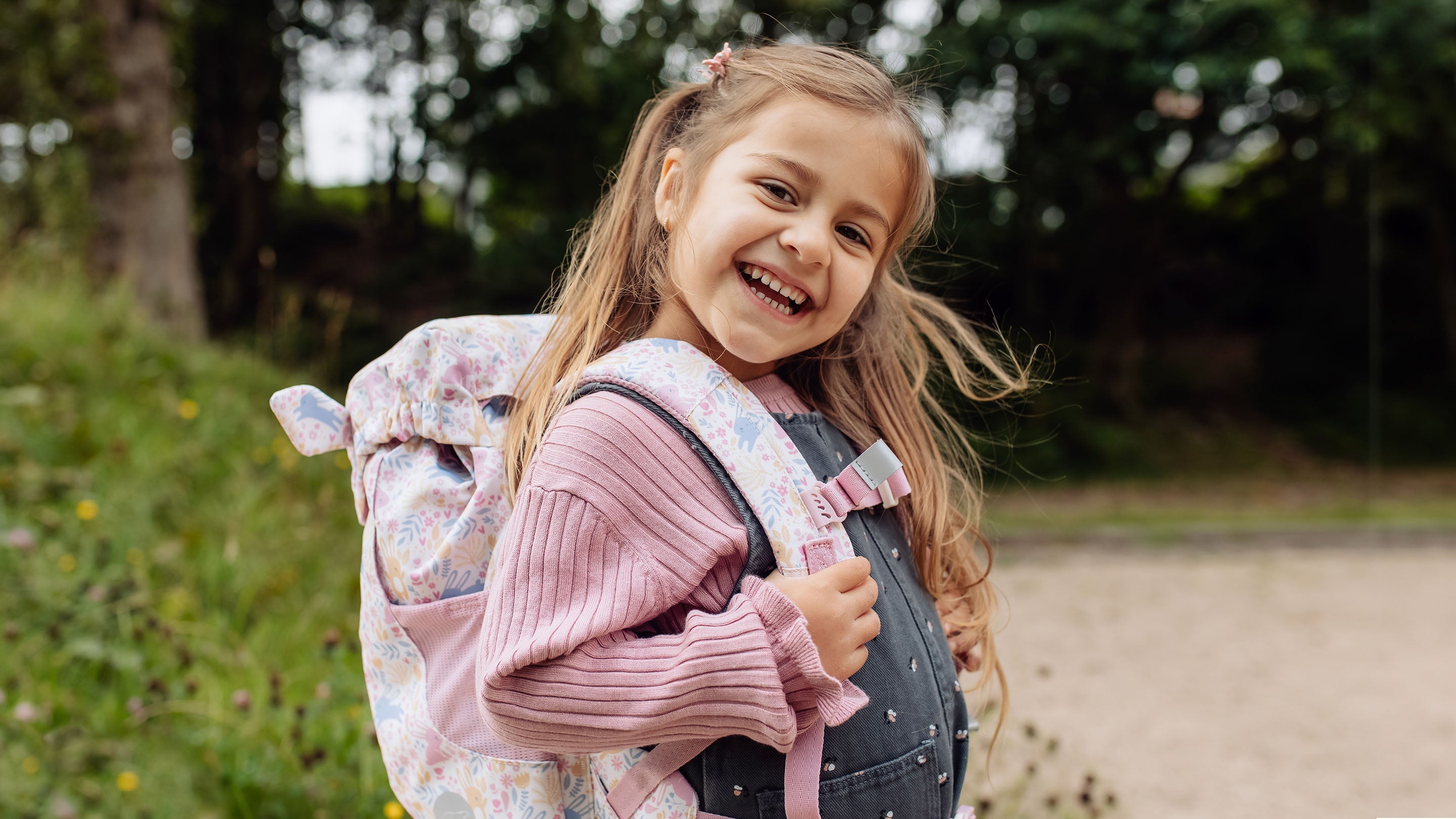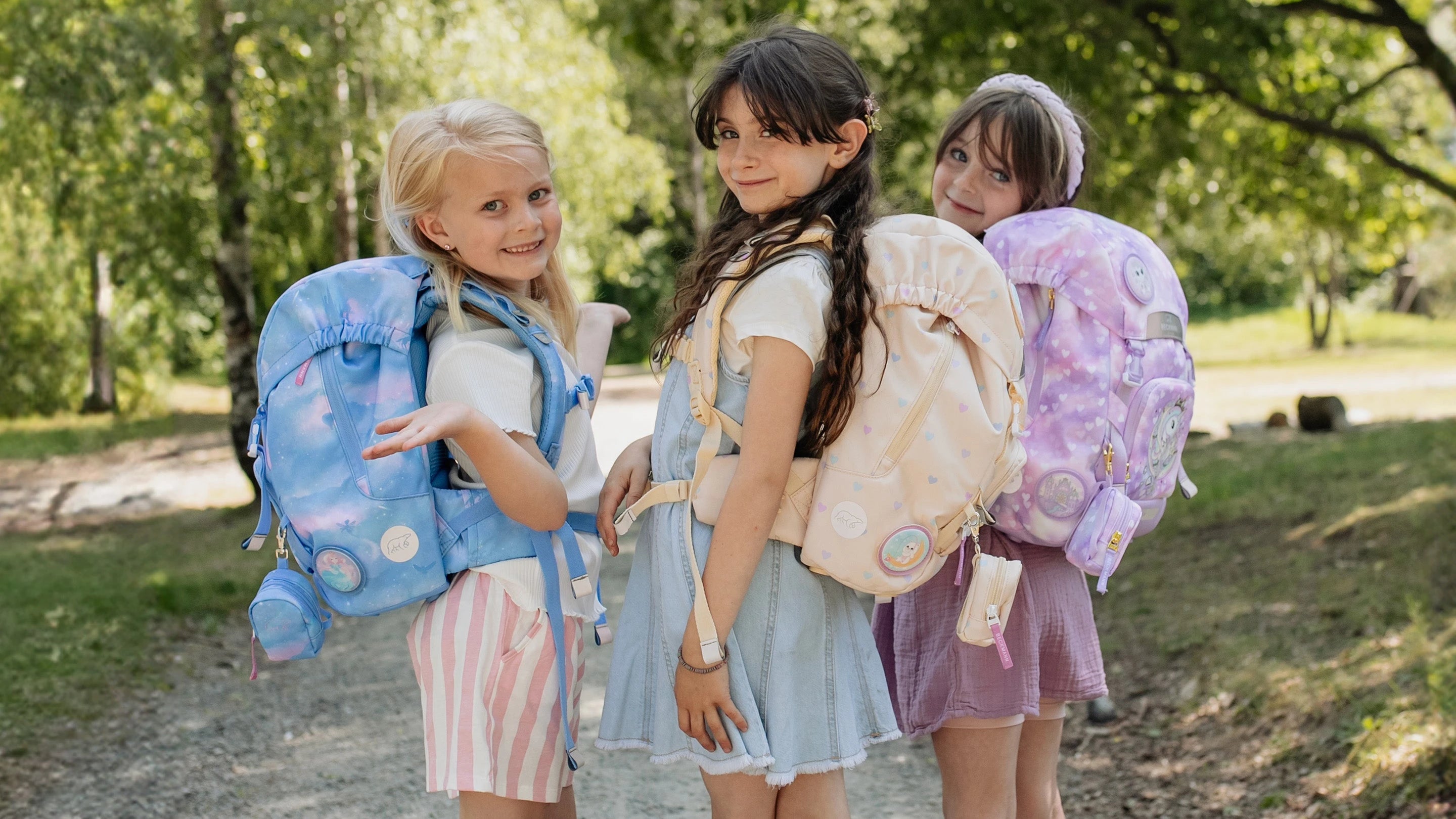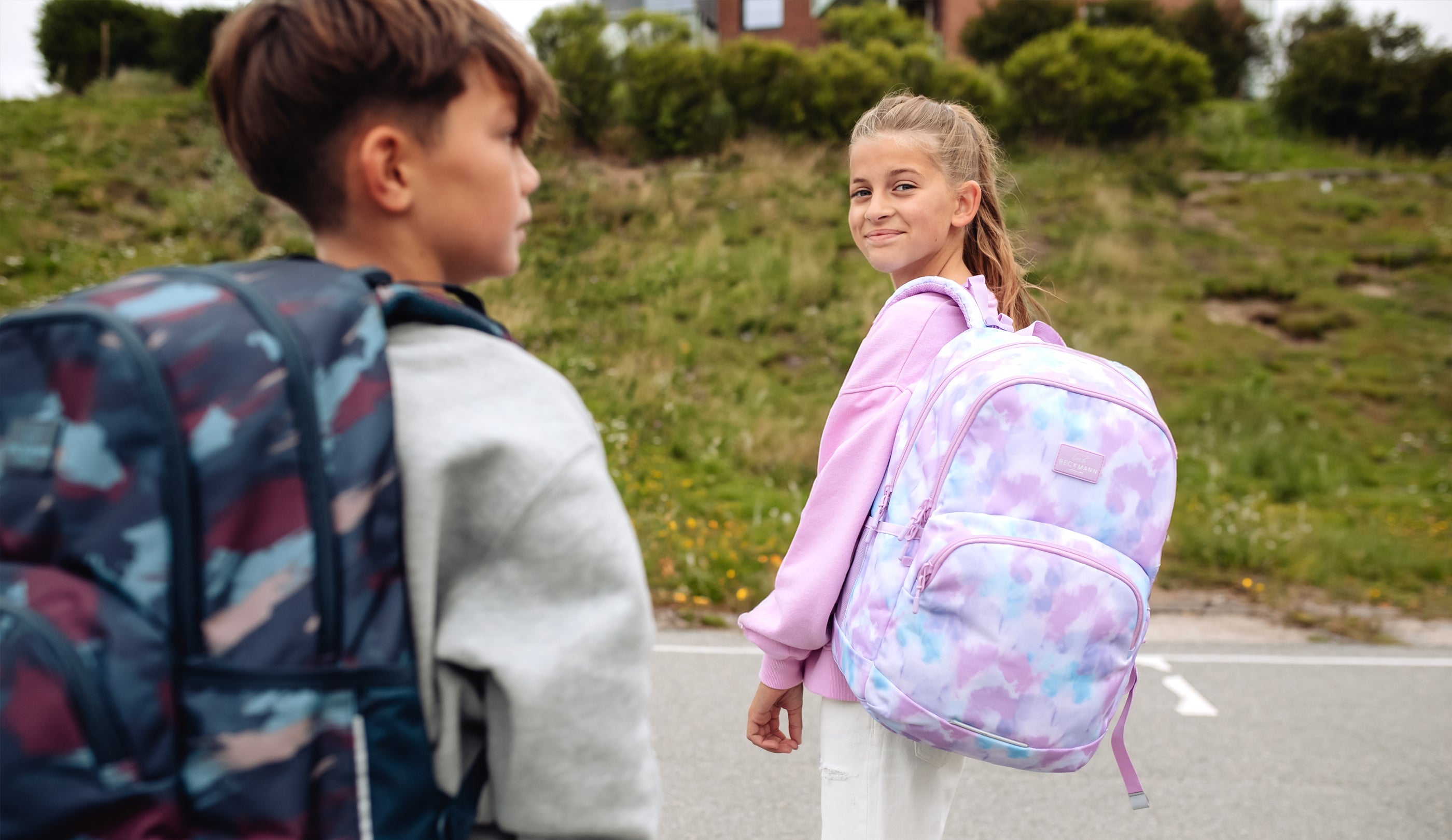Beckmann’s Ergonomic Principles
Children grow quickly during their early school years. Our backpacks are designed to adapt to their changing bodies—combining lightweight materials, smart support, and adjustable features to promote comfort, healthy posture, and natural movement.
Adapted to the child
During a child’s first 5–6 years at school, they grow significantly—not just in height, but also in width, overall physique, and their need for space. We’ve chosen the adaptation features we believe are most important to ensure a comfortable, tailored fit for each individual child—without adding unnecessary weight. That’s why we created the Classic series in three different sizes.
Some manufacturers have an adjustable back length on their backpacks, so that the child can keep the same backpack for many years. However, these adaptations add weight, and it is difficult to get the backpack to fit optimally throughout the entire period of use. Instead, we recommend a light, optimally adjusted backpack that is replaced after 2-3 years.
The aluminium frame is adapted so that it fits most children in the target group. It is also possible to take out the frame and shape it by hand to further tailor it to the child.
Adjust the height of the backpack by tightening the shoulder straps. The back should sit just above the child’s bottom. The lower part of the hip belt should sit on the pelvic crest. Tighten the hip belt. The chest strap can be adjusted both in height and length. This strap should be at the same height as the armpits. The top straps are important – these pull the backpack in towards the shoulders.
The shape of the shoulder straps is made to fit many different children in the target group. These should fit properly over the shoulders and not feel uncomfortable on the neck.


Weight distribution
We have designed the backpack so that it reduces strain on the shoulders, transferring more of the weight to the hips. The internal structure, the padded hip belt, chest strap and shoulder straps are important for tightening the backpack so that it stays close to the body – which makes it easier for the child to maintain a balanced, relaxed posture. (1)
A backpack that does not fit close to the body will mean that the child is forced to adjust his/her posture to maintain balance. (2) A natural consequence of this is that the child pushes his/her shoulders forward, which can eventually lead to pain in the neck and shoulders. This occurs more often if the backpack is heavy – particularly if the weight is at the top of the backpack and the backpack is too far away from the back.
A school backpack has different contents than, for example, a hiking backpack and the contents are often hard and rigid. Therefore the internal structure of the backpack is important.

The S-shaped aluminium support in the backpack allows the backpack to sit close to the body (3), without feeling sharp against the bottom (4) or tipping away from the neck at the top (5). It is also important to pack the backpack correctly. The heaviest items should be placed at the bottom, in towards the back. We have therefore included a pocket for books/laptop innermost towards the back, with internal adjustment cords to pull the items further in towards the back.
Materials in the backpack have been selected carefully to make the backpack light and comfortable to wear. The shoulder straps and back panel are padded with a combination of soft padding and a slightly stiffer, pressure-absorbent foam.
Freedom of movement
The hip belt provides good stability and prevents the backpack from moving around during activity, e.g. when the child jumps and runs. The chest strap is important; it allows free movement of the arms and also prevents the backpack from sliding off the shoulders. The backpack is designed so that it is narrow enough to not be in the way for the arms.
When the backpack is attached to the shoulders and hips, it is best to have a short distance to the back (6). This allows the child to turn their back more freely. The back of the backpack is also designed to ensure good air flow, to prevent the backpack from feeling clammy.



